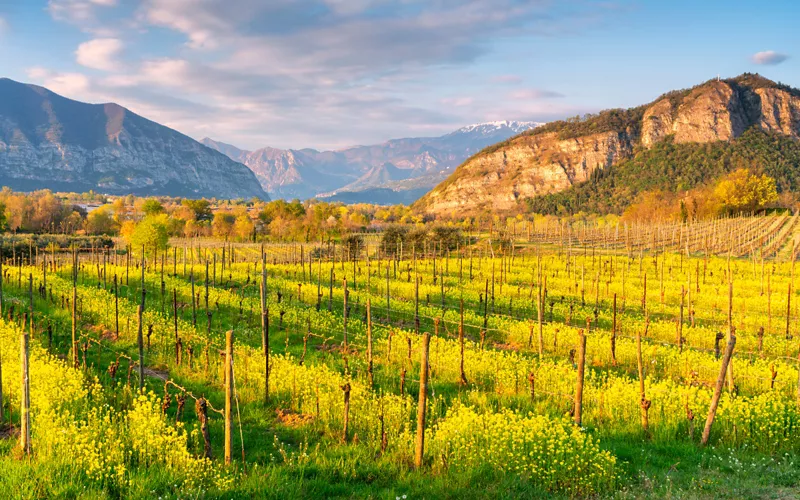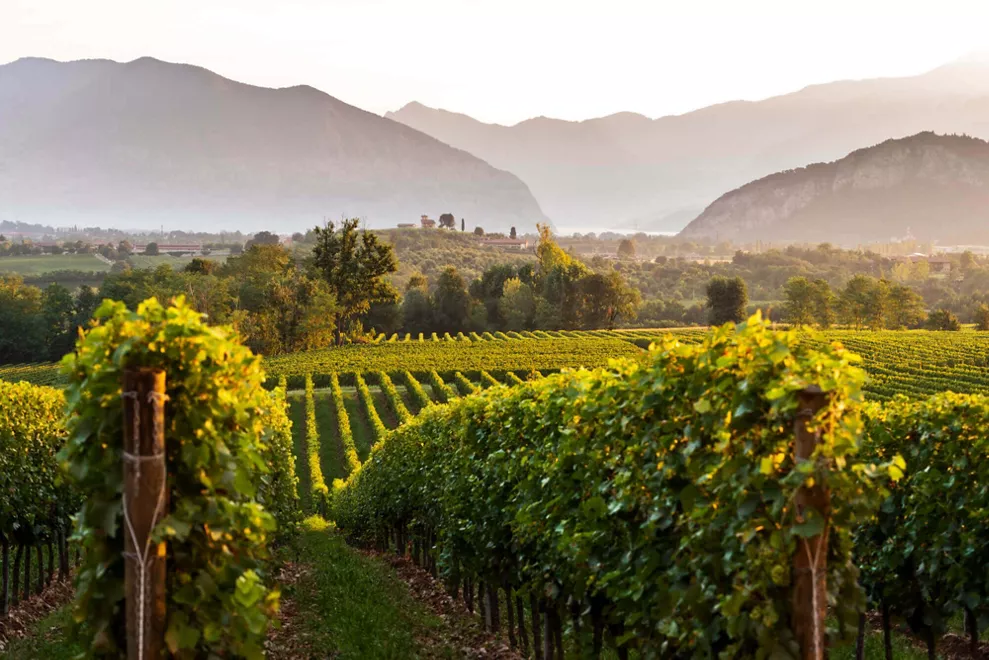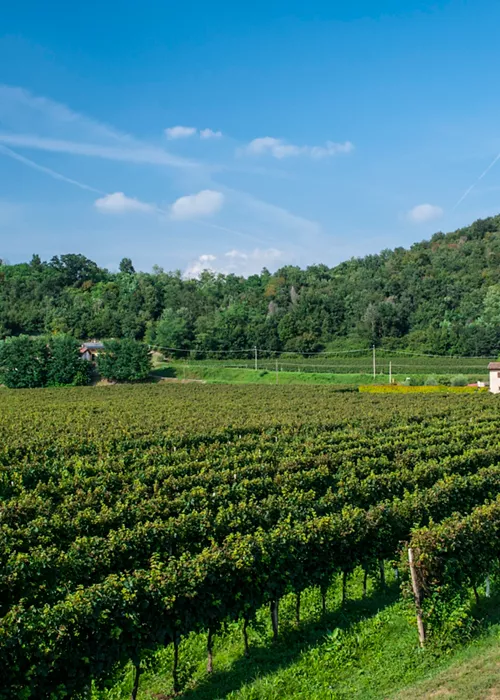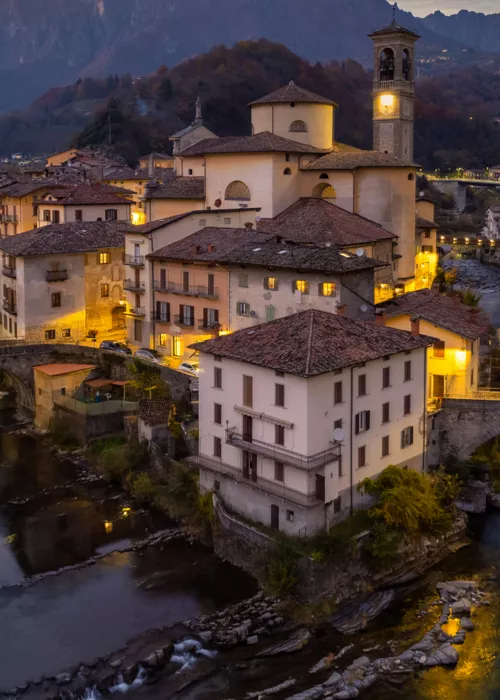Franciacorta, Lombardy: a journey of discovery through wine and architecture
2 minutes
An enchanting natural setting of hills, vineyards and olive groves, and villages populated by villas, farmsteads and castles. This is Franciacorta, an area stretching from Brescia to Lake Iseo.
We invite you to explore its landscape, famous for producing the wine of the same name and full of surprises.
History and architecture

Its name is the result of two French words: franchae and curtes, an explicit reference to the exemption from excise duty enjoyed by its courts under the administration of the Benedictines and Cluniacs. Franciacorta is rich in historic buildings, especially monasteries and patrician villas, symbols of a prosperous past.
Each work of architecture integrates perfectly with its surrounding landscape. This is evident when visiting the Monastery of San Pietro in Lamosa, located in the municipality of Provaglio d’Iseo. The structure stands majestically in the nature reserve above the Sebino peat bogs and harbours many curiosities within its walls, alongside valuable works of art including the cycle of frescoes on the life of Jesus.
Another pearl among the religious complexes of Franciacorta is the Olivetan Abbey of San Nicola, in Rodengo Saiano. A key destination for pilgrims and important artists, with the arrival of Napoleon it was first turned into a farm and then recovered by Pope Paul VI. Don’t miss a visit to its three beautiful cloisters and the Church of St Nicholas: inside you can admire Romanino’s frescoes.
DOCG wine production and culinary pairings

To most people, Franciacorta is probably known as the land of Franciacorta wines, and this is certainly no coincidence, since this area produces the prized sparkling wine that enjoys Franciacorta DOCG recognition and that is also excellent in the Franciacorta rosé version.
The first traces of vineyards here are ancient and even date back to prehistoric times. But it was mainly with the Romans and later in the Middle Ages that vine cultivation intensified, thanks to the favourable climate and soil conditions.
Today, Franciacorta is prized in Italy and abroad and is served with a wide variety of dishes.
In fact, more and more restaurants and wineries in the area are offering sophisticated menus, with excellent results.
Among the many delicacies on offer, we suggest you try beef in oil from Rovato, slow-cooked and served with polenta, or baked tench from Clusane, both to be enjoyed with a Franciacorta Extra Brut. Don’t miss Risotto with Franciacorta, perfect with a glass of Franciacorta Pas Dosé.







